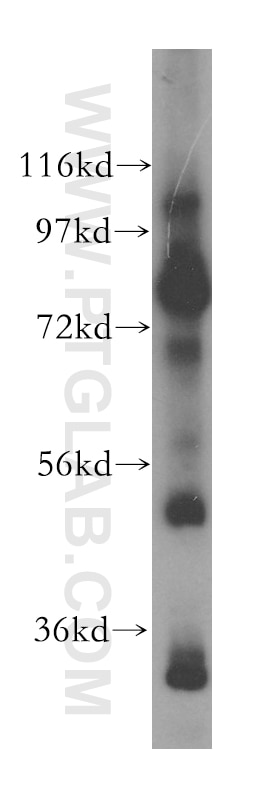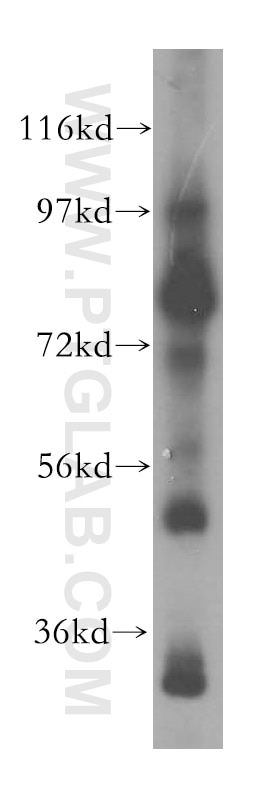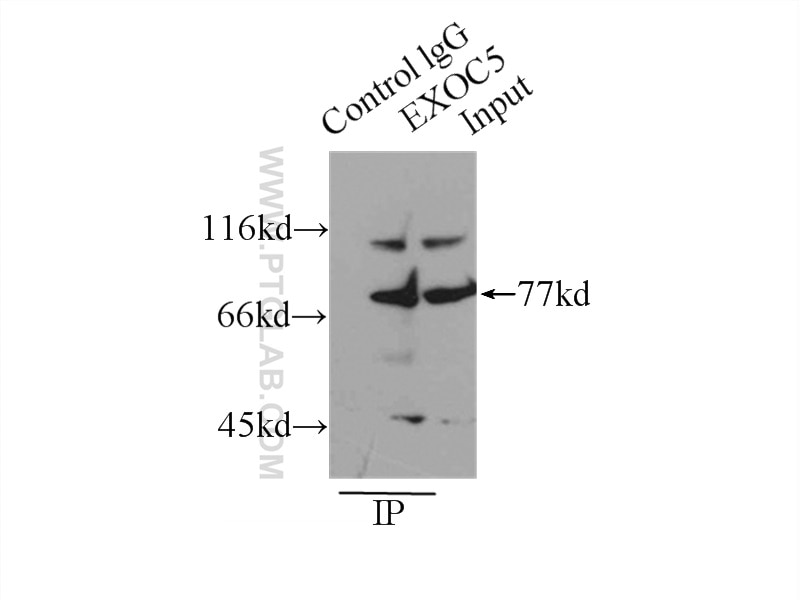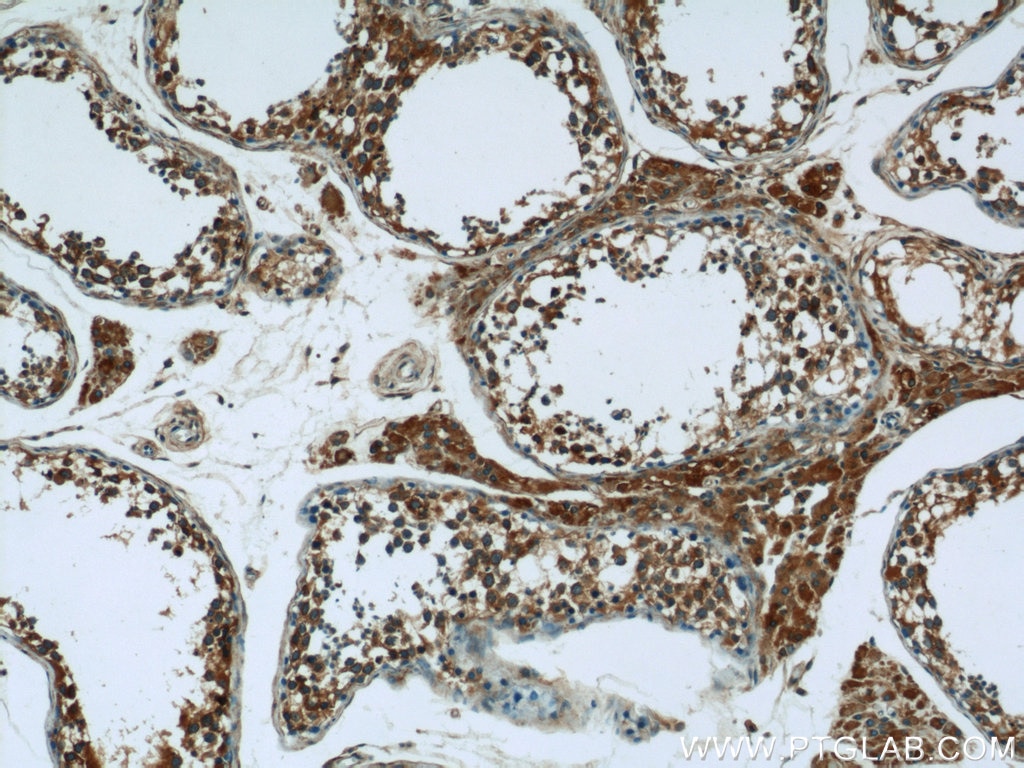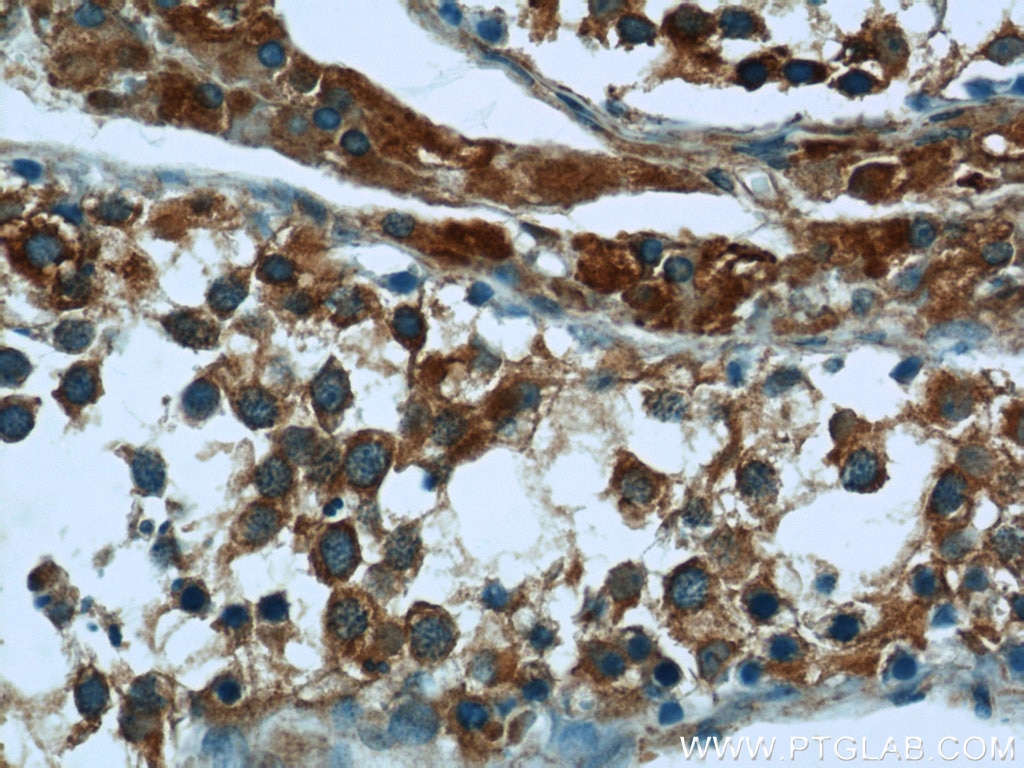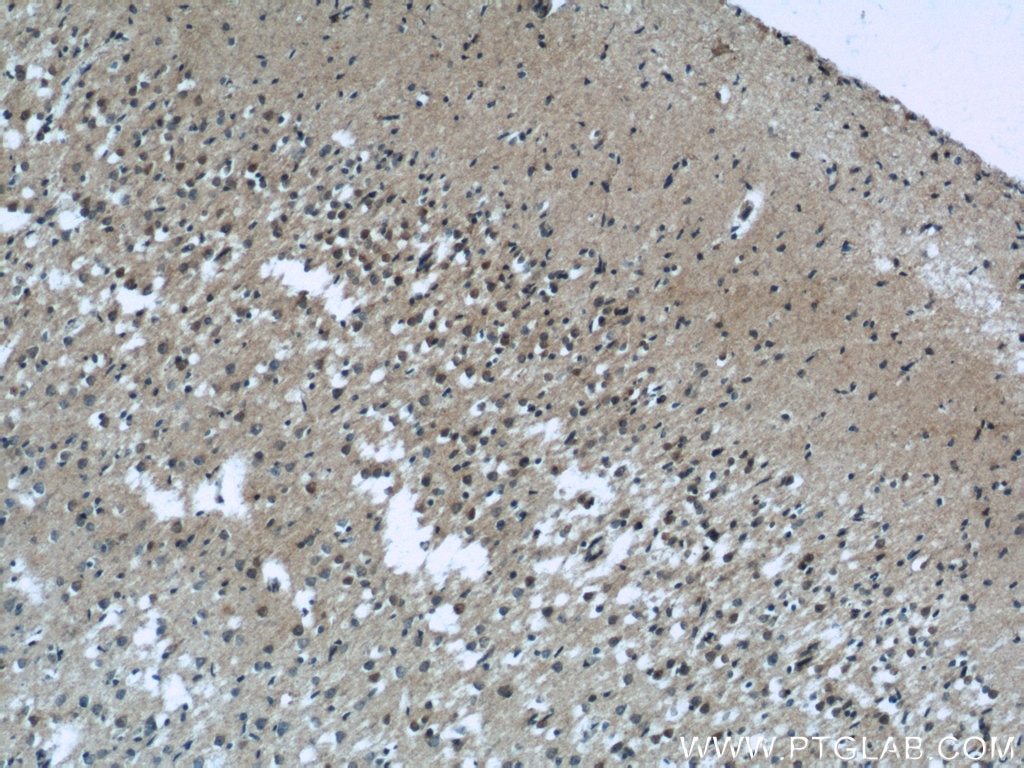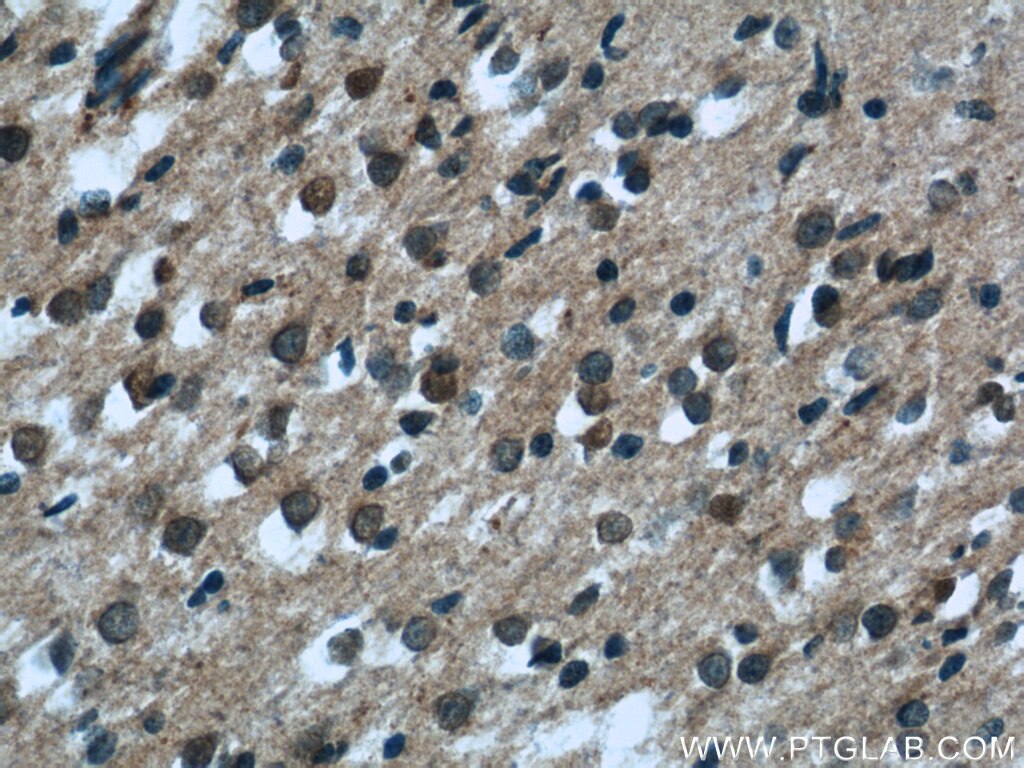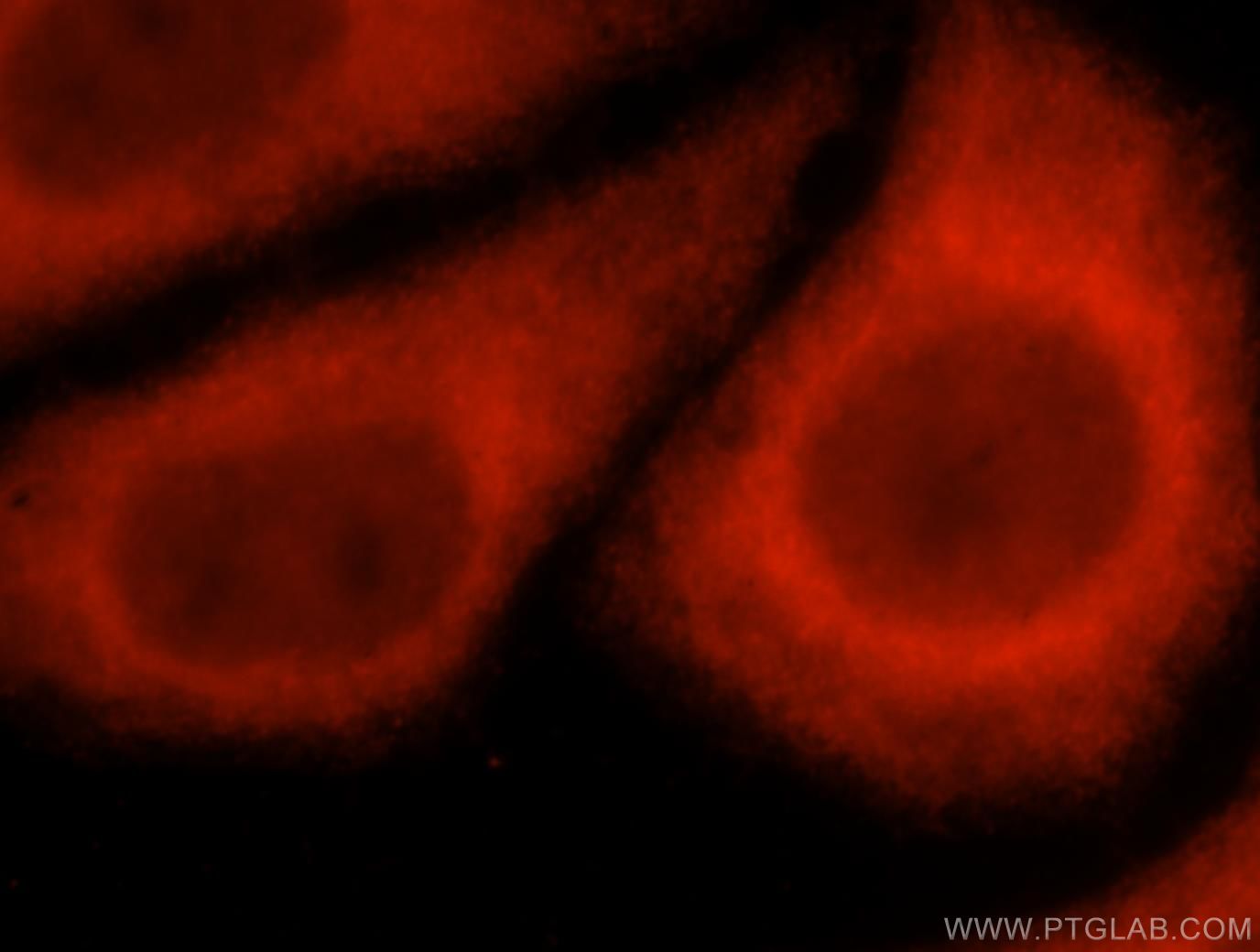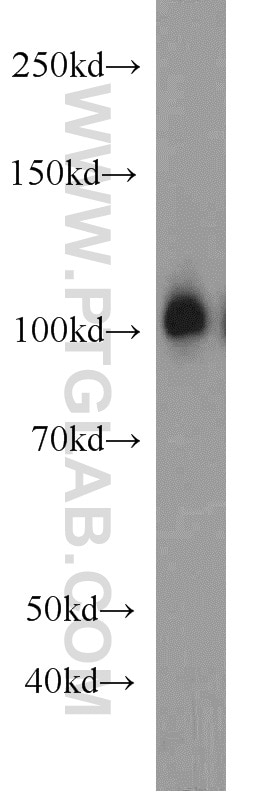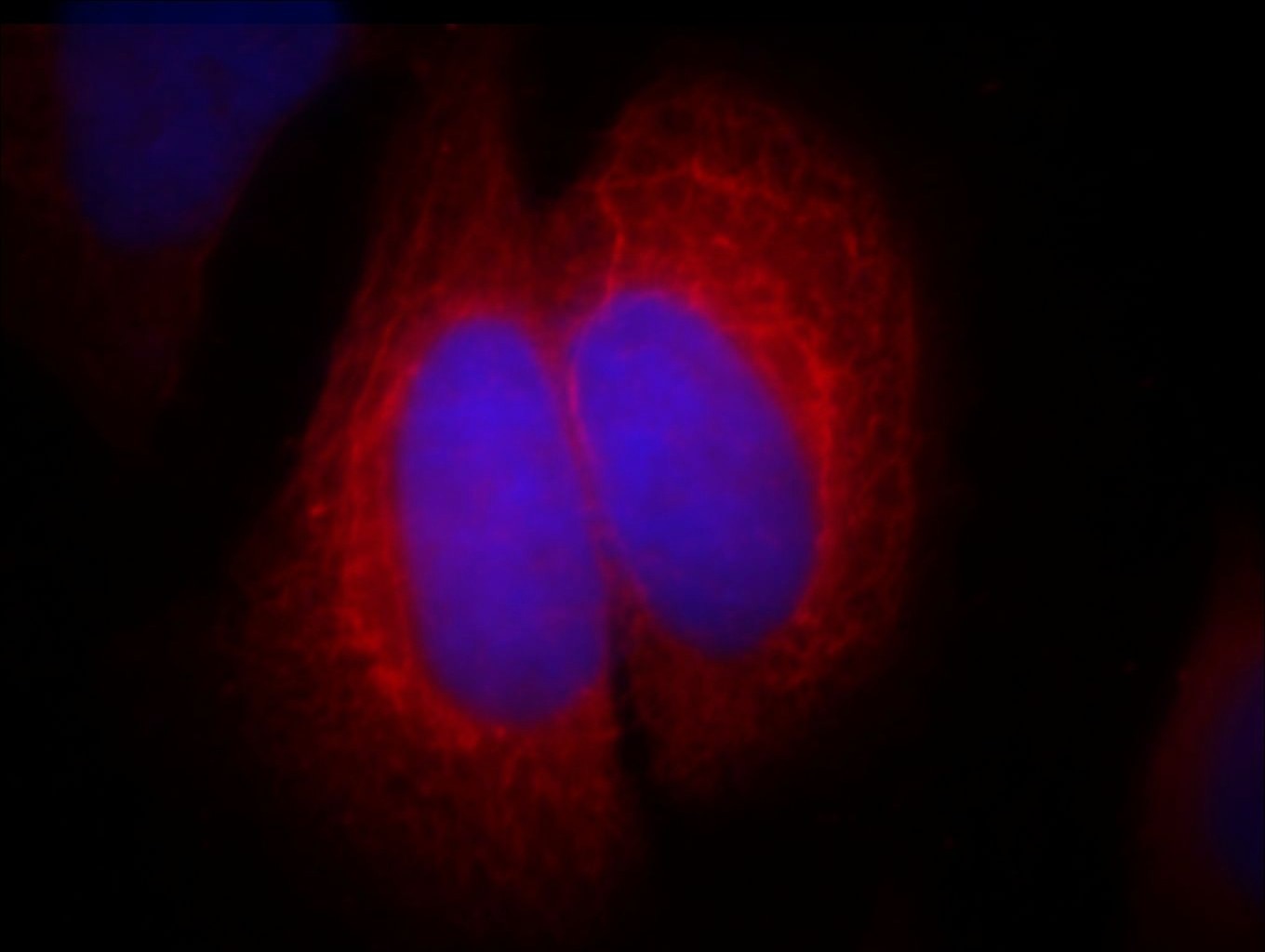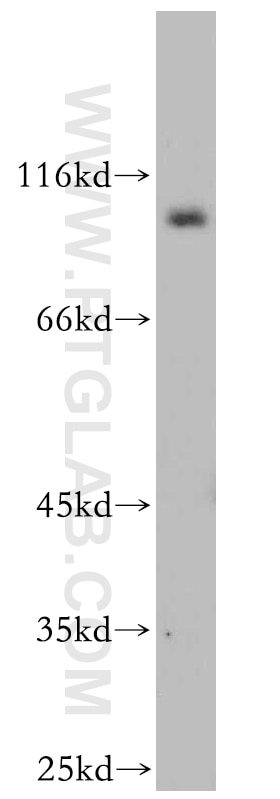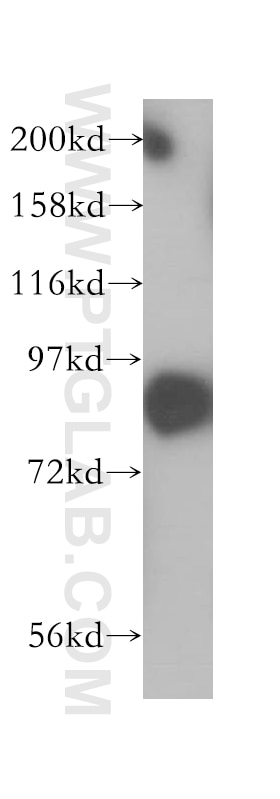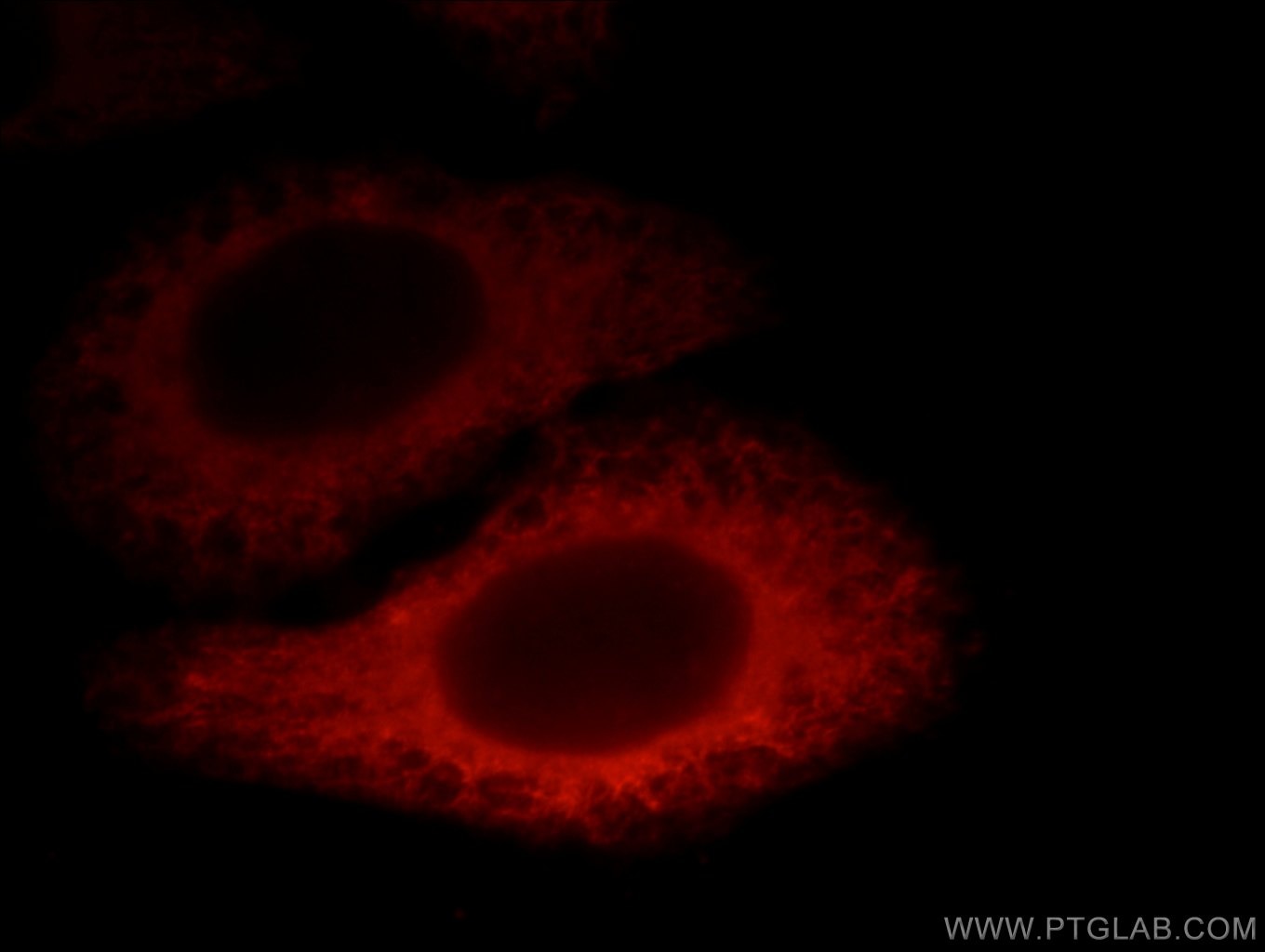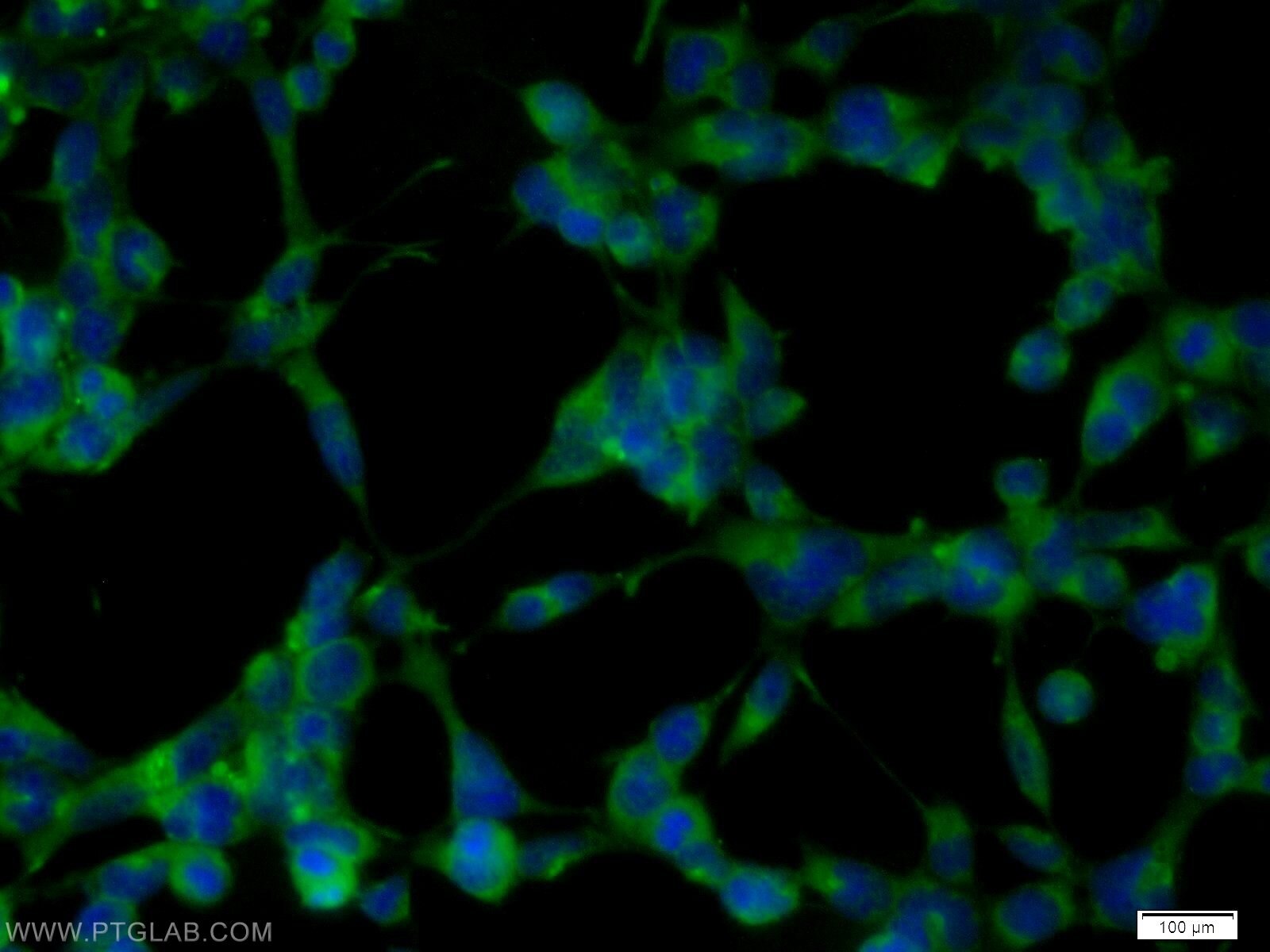- Phare
- Validé par KD/KO
Anticorps Polyclonal de lapin anti-EXOC5
EXOC5 Polyclonal Antibody for WB, IP, IF, IHC, ELISA
Hôte / Isotype
Lapin / IgG
Réactivité testée
Humain, rat, souris
Applications
WB, IHC, IF/ICC, IP, ELISA
Conjugaison
Non conjugué
N° de cat : 17593-1-AP
Synonymes
Galerie de données de validation
Applications testées
| Résultats positifs en WB | tissu cérébral de souris, tissu de glande surrénale humain |
| Résultats positifs en IP | tissu cérébral de souris |
| Résultats positifs en IHC | tissu testiculaire humain, tissu cérébral humain il est suggéré de démasquer l'antigène avec un tampon de TE buffer pH 9.0; (*) À défaut, 'le démasquage de l'antigène peut être 'effectué avec un tampon citrate pH 6,0. |
| Résultats positifs en IF/ICC | cellules HepG2 |
Dilution recommandée
| Application | Dilution |
|---|---|
| Western Blot (WB) | WB : 1:500-1:3000 |
| Immunoprécipitation (IP) | IP : 0.5-4.0 ug for 1.0-3.0 mg of total protein lysate |
| Immunohistochimie (IHC) | IHC : 1:20-1:200 |
| Immunofluorescence (IF)/ICC | IF/ICC : 1:10-1:100 |
| It is recommended that this reagent should be titrated in each testing system to obtain optimal results. | |
| Sample-dependent, check data in validation data gallery | |
Applications publiées
| KD/KO | See 4 publications below |
| WB | See 11 publications below |
| IHC | See 1 publications below |
| IF | See 3 publications below |
Informations sur le produit
17593-1-AP cible EXOC5 dans les applications de WB, IHC, IF/ICC, IP, ELISA et montre une réactivité avec des échantillons Humain, rat, souris
| Réactivité | Humain, rat, souris |
| Réactivité citée | rat, Humain, souris |
| Hôte / Isotype | Lapin / IgG |
| Clonalité | Polyclonal |
| Type | Anticorps |
| Immunogène | EXOC5 Protéine recombinante Ag11524 |
| Nom complet | exocyst complex component 5 |
| Masse moléculaire calculée | 708 aa, 82 kDa |
| Poids moléculaire observé | 77 kDa |
| Numéro d’acquisition GenBank | BC041126 |
| Symbole du gène | EXOC5 |
| Identification du gène (NCBI) | 10640 |
| Conjugaison | Non conjugué |
| Forme | Liquide |
| Méthode de purification | Purification par affinité contre l'antigène |
| Tampon de stockage | PBS avec azoture de sodium à 0,02 % et glycérol à 50 % pH 7,3 |
| Conditions de stockage | Stocker à -20°C. Stable pendant un an après l'expédition. L'aliquotage n'est pas nécessaire pour le stockage à -20oC Les 20ul contiennent 0,1% de BSA. |
Informations générales
EXOC5 (SEC10), a component of the exocyst complex, is a 77-kDa protein with a broad tissue distribution (PubMed: 9119050). The exocyst complex, composed of eight evolutionarily conserved subunits (SEC3, SEC5, SEC6, SEC8, SEC10, SEC15, EXO70, and EXO84), is essential for targeting exocytic vesicles to specific docking sites on the plasma membrane. The complex is also essential for the biogenesis of epithelial cell surface polarity.
Protocole
| Product Specific Protocols | |
|---|---|
| WB protocol for EXOC5 antibody 17593-1-AP | Download protocol |
| IHC protocol for EXOC5 antibody 17593-1-AP | Download protocol |
| IF protocol for EXOC5 antibody 17593-1-AP | Download protocol |
| IP protocol for EXOC5 antibody 17593-1-AP | Download protocol |
| Standard Protocols | |
|---|---|
| Click here to view our Standard Protocols |
Publications
| Species | Application | Title |
|---|---|---|
Cell RalB and the exocyst mediate the cellular starvation response by direct activation of autophagosome assembly.
| ||
Elife Functional hierarchy among different Rab27 effectors involved in secretory granule exocytosis | ||
Mol Cancer Res EXOC4 Promotes Diffuse-Type Gastric Cancer Metastasis via Activating FAK Signal.
| ||
Cells The Exocyst Is Required for CD36 Fatty Acid Translocase Trafficking and Free Fatty Acid Uptake in Skeletal Muscle Cells | ||
J Biol Chem Disrupted glucose homeostasis and skeletal muscle-specific glucose uptake in an exocyst knockout mouse model.
|
